We pose this question to every person we interview for Documenting DH. These are their responses.
 Rob Howard is a professor of Communication, Religious Studies, and Folklore in the Department of Communication Arts at the University of Wisconsin – Madison. For Rob, since everything is already digital, in some ways Digital Humanities is sort of a catch phrase for people to do humanities. In its broadest sense, however, he defines DH as ” the application of computational and computer-based approaches to topics, projects, and scholarly labor that people have traditionally associated with the fields of the humanities.”
Rob Howard is a professor of Communication, Religious Studies, and Folklore in the Department of Communication Arts at the University of Wisconsin – Madison. For Rob, since everything is already digital, in some ways Digital Humanities is sort of a catch phrase for people to do humanities. In its broadest sense, however, he defines DH as ” the application of computational and computer-based approaches to topics, projects, and scholarly labor that people have traditionally associated with the fields of the humanities.”



Ex Libris is a digital humanities project undertaken by three iSchool students at the University of Wisconsin. Kyle Neill, Matthew Mickelson, and Morgan Pabst define the digital humanities as a broad umbrella term, a methodology that bridges the gap between the digital and the humanities, in other words “humanities with a digital twist.” The students see DH as an effective teaching tool and something that helps pique the interest of audiences and get them engaged in new subjects.
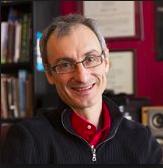 Martin Foys, Professor of English at the University of Wisconsin, Madison, notes that having to define the digital humanities is a vexing question. In many ways we are all digital humanists because we all do humanities work that engages with technology. An alternative definition might focus on how technology works for humanists, so Foys specifies that he sees DH as “an approach to the humanities that is really engaging with the newest forms of technologies to transform the way in which we do our humanities work.”
Martin Foys, Professor of English at the University of Wisconsin, Madison, notes that having to define the digital humanities is a vexing question. In many ways we are all digital humanists because we all do humanities work that engages with technology. An alternative definition might focus on how technology works for humanists, so Foys specifies that he sees DH as “an approach to the humanities that is really engaging with the newest forms of technologies to transform the way in which we do our humanities work.”
 Eric Hoyt, Associate Professor in the Media and Cultural Studies Department at the University of Wisconsin, Madison, describes DH “as an umbrella term that can mean any number of things related to taking digital technology and integrating it to humanities disciplines.” For Hoyt, this includes computational humanities – using digital technologies to gather data from text, audio, and visual media, public humanities – work that takes the form of digital distribution and communication, and scholarship – in particular the exploration of publishing humanities work in multi-media digital platforms.
Eric Hoyt, Associate Professor in the Media and Cultural Studies Department at the University of Wisconsin, Madison, describes DH “as an umbrella term that can mean any number of things related to taking digital technology and integrating it to humanities disciplines.” For Hoyt, this includes computational humanities – using digital technologies to gather data from text, audio, and visual media, public humanities – work that takes the form of digital distribution and communication, and scholarship – in particular the exploration of publishing humanities work in multi-media digital platforms.
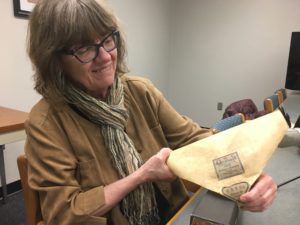
Robin Rider is a librarian in the University of Wisconsin’s Memorial Library Special Collections, as well as a senior lecturer in the History Department. As a librarian in a Special Collections department, she has been involved in several digital humanities projects dealing with the library’s collections. She describes the digital humanities as “an expansive topic and a bit on the elastic side.” Her specific definition is “using digital tools to ask, answer, and to prompt new questions in humanities research and teaching.”
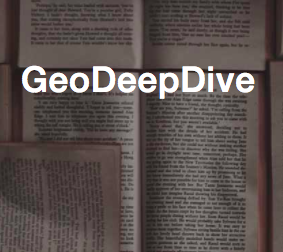
GeoDeepDive is comprised of a team of geoscientists, computer scientists, developers and librarians. It defines itself as “A digital library and cyberinfrastructure facilitating the discovery and utilization of data & knowledge in published documents.” Although the team are predominantly scientists, the project itself could be transferrable to disciplines in the humanities. Coming from a STEM background, Shanan Peters, a geoscientist and one of the project’s lead members, can imagine the digital humanities as “being a combination of computational and analytical approaches being applied to curated content… but [he’s] not quite sure which direction the field is going or how it defines itself,” a pretty fair assessment.
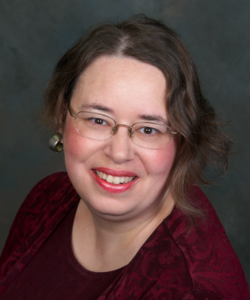 Dorothea Salo is a faculty associate at the University of Wisconsin iSchool. She tries very hard not to define the Digital Humanites, but when hard pressed, provided her thoughts from one of her recent publications: “The Digital Humanities’ umbrella shelters scholars curious about novel mediated analysands – software computer games, works of art and literature, social media, etc. – as well as scholars applying computational analysis methods to corpora both small and unimaginably large.”
Dorothea Salo is a faculty associate at the University of Wisconsin iSchool. She tries very hard not to define the Digital Humanites, but when hard pressed, provided her thoughts from one of her recent publications: “The Digital Humanities’ umbrella shelters scholars curious about novel mediated analysands – software computer games, works of art and literature, social media, etc. – as well as scholars applying computational analysis methods to corpora both small and unimaginably large.”
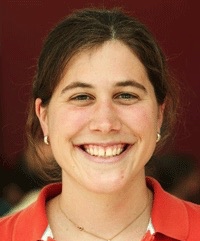
Christina Koch is a research computing facilitator at the University of Wisconsin’s Center for High Throughput Computing. Having worked mostly in scientific fields Christina explains that “I have good sense of what the humanities are, and that is the study of human artifacts and culture. When I hear the word ‘digital’ put in front of ‘humanities’ I think of two things. One is using digital tools and digital methods as part of that humanistic study, and the other is the [humanistic] study of digital culture, branching out from studying books or art or whatever to studying digital art, digital media, the internet and social media.”

Alan Rubel is an associate professor at the University of Wisconsin iSchool and in the Legal Studies Program. “[I describe digital humanities] expansively. I don’t have a unique definition. I don’t have a definition I can state very tersely, though I can try with something like: Anything where digital information communication technologies intersect with humanistic inquiry. But that’s huge in two ways: 1) because digital communication technologies intersect with the humanities in different ways, and 2) I don’t have a good definition for what humanities actually is. So it’s expansive in two different ways.” Alan speaks more about his definition and experience with digital humanities research in his interview coming soon.
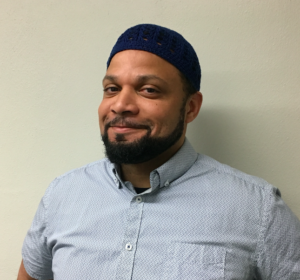 Reginald Royston is an assistant professor at the University of Wisconsin iSchool and the Department of African Cultural Studies. “For me, digital humanities describes the transformation of traditional humanities texts – historical documents, or performances or art or thinking about humanistic texts – into the digital world or through digital media.” Royston sees the digital humanities exploring such questions as “What happens when literature goes online? What’s digital art? What’s the historical value of podcasts, of old websites, snaps, tweets? How can we bring traditional humanities thinking or interpretations into the digital world? What is specific to born digital media or artistic or culture production?” Reginald’s interview explains more about his and his students’ digital humanities projects here.
Reginald Royston is an assistant professor at the University of Wisconsin iSchool and the Department of African Cultural Studies. “For me, digital humanities describes the transformation of traditional humanities texts – historical documents, or performances or art or thinking about humanistic texts – into the digital world or through digital media.” Royston sees the digital humanities exploring such questions as “What happens when literature goes online? What’s digital art? What’s the historical value of podcasts, of old websites, snaps, tweets? How can we bring traditional humanities thinking or interpretations into the digital world? What is specific to born digital media or artistic or culture production?” Reginald’s interview explains more about his and his students’ digital humanities projects here.
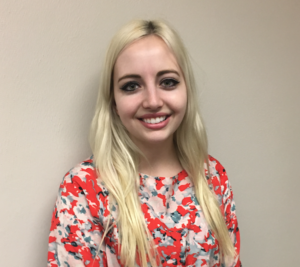 Brianna Marshall, Research Data Services librarian at the University of Wisconsin, Madison: “I like to keep it simple. I describe [digital humanities] as the application of computational methods and new approaches to traditional humanities disciplines.” Brianna’s interview explains more about how Research Data Services can help with digital humanities projects here.
Brianna Marshall, Research Data Services librarian at the University of Wisconsin, Madison: “I like to keep it simple. I describe [digital humanities] as the application of computational methods and new approaches to traditional humanities disciplines.” Brianna’s interview explains more about how Research Data Services can help with digital humanities projects here.
Bronwen Masemann, Instructor at the iSchool, University of Wisconsin, Madison, teaches a class on Digital Humanities Analytics: “Digital Humanities is the use of computational and quantitative methods to study humanities questions. I always talk to my students about how we use the vast amount of material that we have digitized and how the large amount of material available about literature, history, and other humanities topics has changed the way we think about research in the humanities.” Bronwen speaks more about her class and experience with digital humanities here.
 Deidre Stuffer, UW graduate student in the English department working on Visualizing English Print: “So the way that I would describe the digital humanities is that they are a nexus between the affordances of computer science practices and humanities scholarship. Speaking as a literature scholar, this means using methodologies informed by advances in computer science to look at our canon anew and looking at the canon in context with a large scale of documents that we have not been able to before – really re-evaluating the narratives that we use to describe our fields and time periods.” Deidre speaks more about her project and experience with the digital humanities here.
Deidre Stuffer, UW graduate student in the English department working on Visualizing English Print: “So the way that I would describe the digital humanities is that they are a nexus between the affordances of computer science practices and humanities scholarship. Speaking as a literature scholar, this means using methodologies informed by advances in computer science to look at our canon anew and looking at the canon in context with a large scale of documents that we have not been able to before – really re-evaluating the narratives that we use to describe our fields and time periods.” Deidre speaks more about her project and experience with the digital humanities here.
